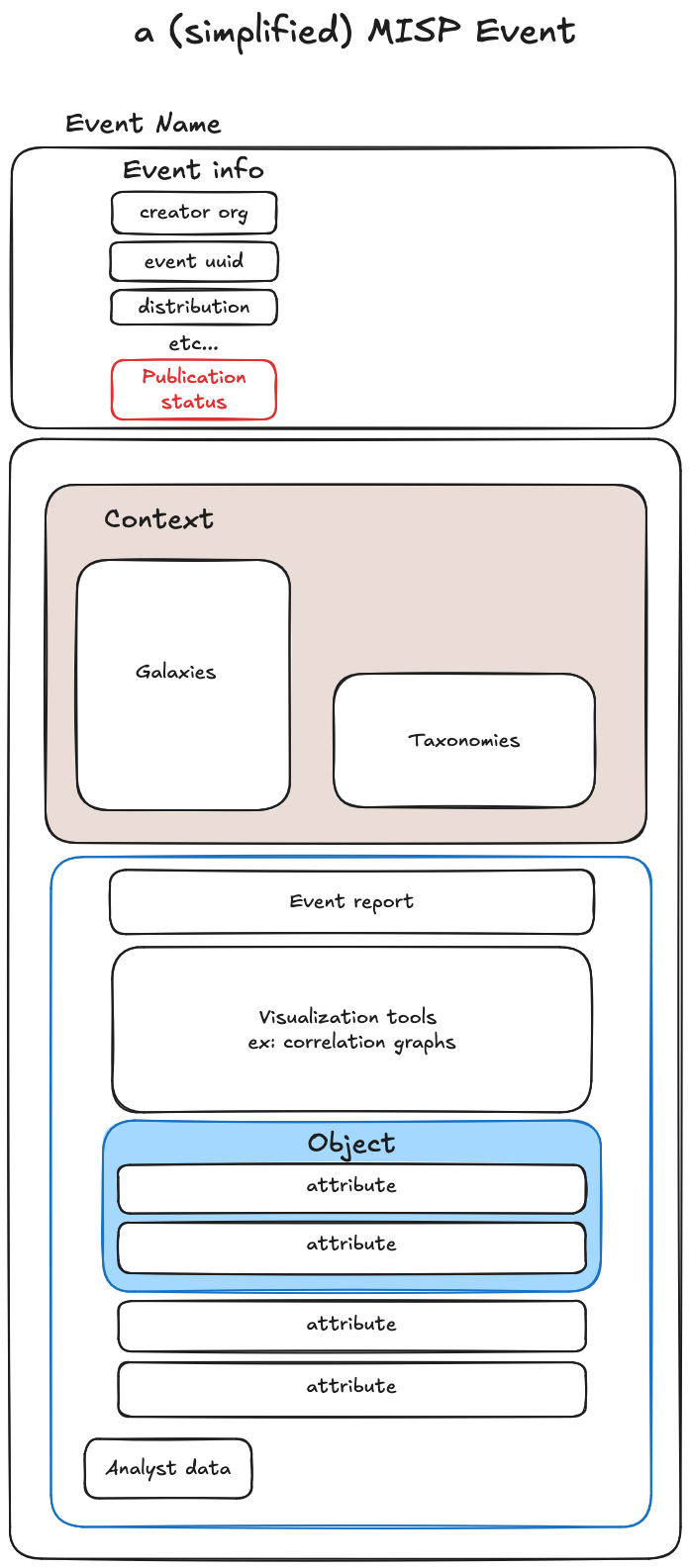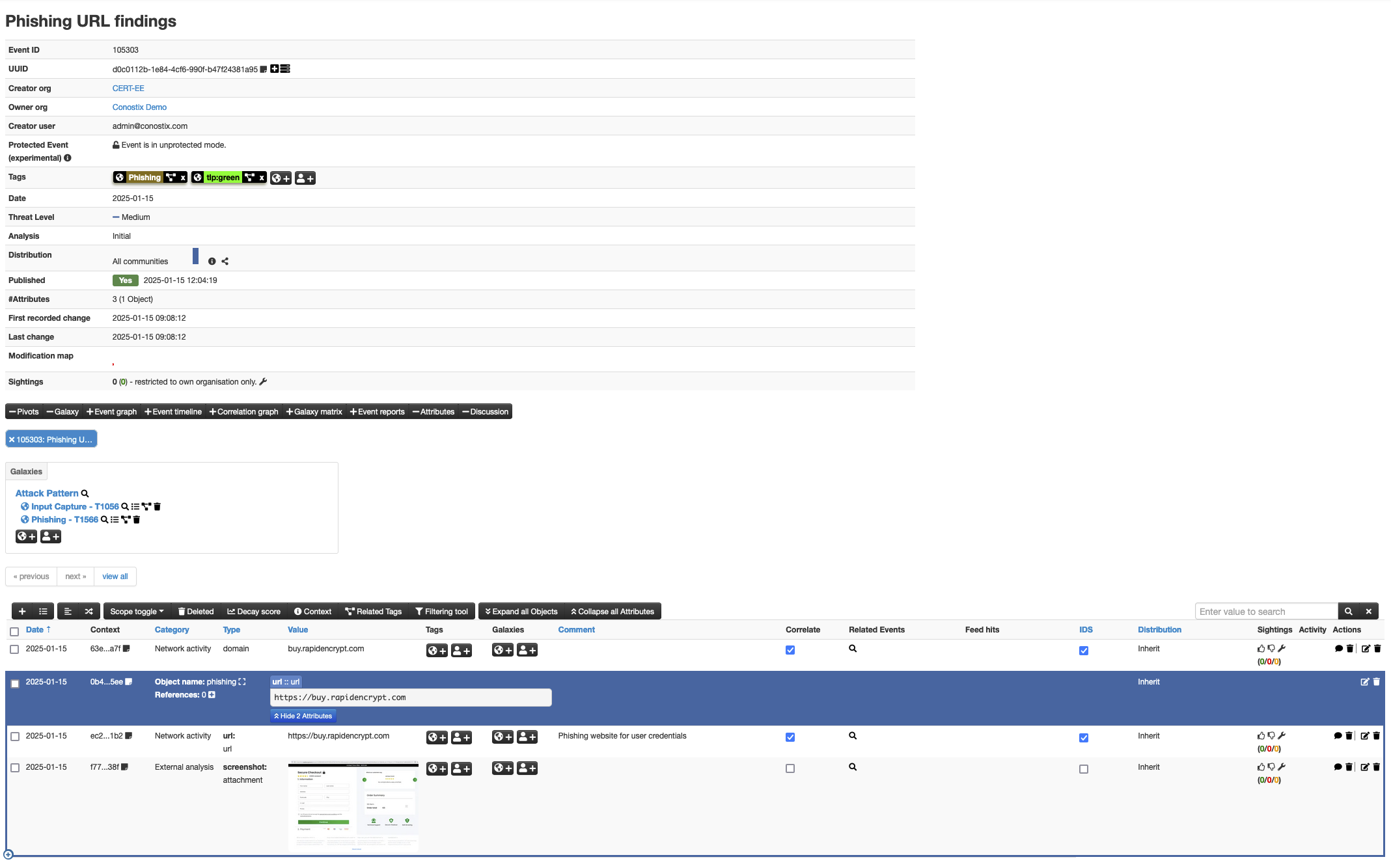What's inside a MISP event?
What's inside a MISP event?
Let’s visualize the MISP data model within a MISP event
To simplify understanding the MISP data model, we’ve divided its approach into two main layers: a data layer and a context layer. Let’s see this in the context of a MISP event.
Data layer
The data layer consists of three key components:
1. Events
- Primary containers in MISP
- Group related information together
2. Attributes
- Individual data points (e.g., IP addresses, file hashes)
- Have a type (e.g., MD5, URL) and category (e.g., Payload delivery)
3. Objects
- Group related attributes
- Represent complex structures (e.g., email with sender, subject, and attachment)
- There are templates for MISP objects
Context layer
While intertwined with the data layer in practice, a context layer adds crucial information to the event:
Tags and Taxonomies
- Provide additional context
- Include free tags, standardized taxonomies, and complex galaxies
Analysis
The analysis component of an event regroup the dynamic elements. Dynamic means that they can change. Ex: a correlation reveals new indicators, which motivates a new tag to be attached.
Correlation
- Automatically links related attributes across events
The event timeline
- Various timestamps provide temporal context
The event graph
- To visualize relationships between entities contained in the event
Pivots
- Allow analysts to navigate between related events and attributes
Sightings
- Record when data points are observed
- Add time dimension to threat intelligence
- Confirm validity of attributes or mark false positives
- Support expiration of indicators
- Can be contributed via UI, API, or automated tools
Event Reports
- Narrative descriptions
- Provide context to technical information
Analyst Notes
- To describe information, add annotations
- Is attached to the target UUID
Proposals
- To correct errors
Illustrations
MISP event
An example: Phishing URL findings**
Pauline Bourmeau
visit: MISP Project
This post is licensed under CC BY 4.0 by the author.

